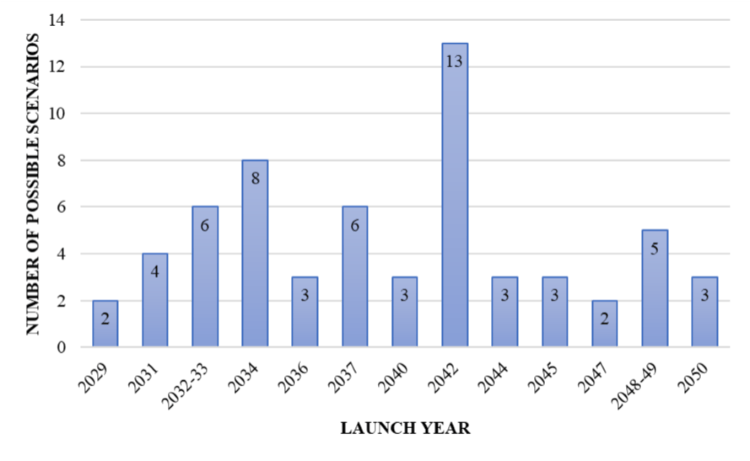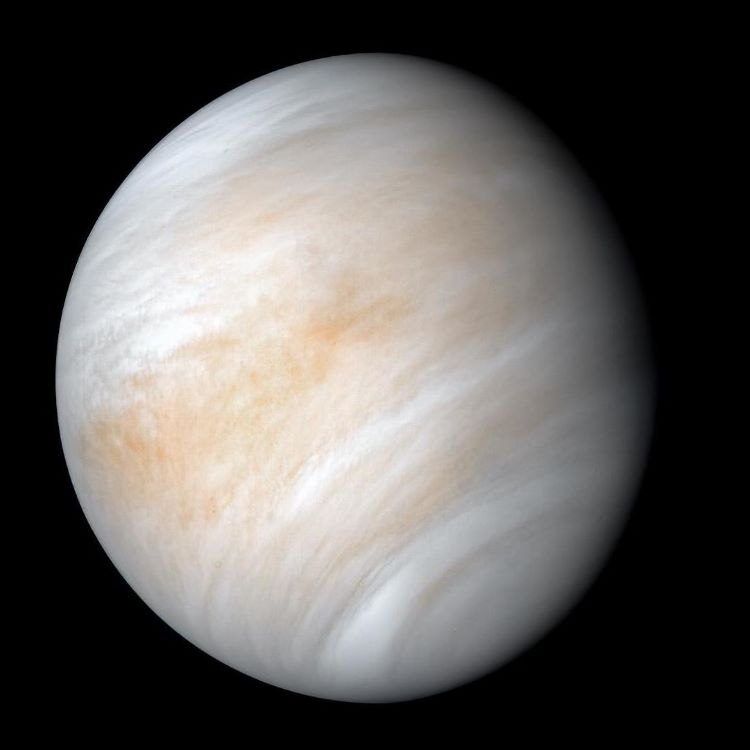A recent study submitted to Acta Astronautica examines the prospect of designing a Venus mission flight plan that would involve visiting a nearby asteroid after performing a gravity assist maneuver at Venus but prior to final contact with the planet. The study was conducted by Vladislav Zubko, who is a researcher and PhD Candidate at the Space Research Institute of the Russian Academy of Science (RAS) and has experience studying potential flight plans to various planetary bodies throughout the solar system.
“The motivation behind this study was to enhance the efficiency and success rate of Venus missions by including an asteroid flyby in the flight scheme,” Zubko tells Universe Today. “As widely acknowledged, Venus’s particular atmospheric conditions make a mission to the planet a challenging prospect, with designing a spacecraft and achieving a landing being notably difficult tasks. Additionally, Venus’ slow rotation, taking 243 Earth days, restricts potential landing sites on its surface.”
For the study, Zubko examined the potential for conducting flybys of 117 asteroid candidates with diameters greater than 1 km (0.62 miles) using the Solar System Dynamics catalog from NASA JPL, referring it his plan as an Earth-Venus-Asteroid-Venus flight plan that could potentially occur using launch dates between 2029 and 2050. Using a variety of calculations, Zubko found 53 mission scenarios with 35 asteroid targets between 2029 and 2050 where a spacecraft could encounter an asteroid while en route to Venus.
 Graph from the study displaying the number of mission scenarios per year between 2029 and 2050. (Credit: Zubko (2023), Figure 4)
Graph from the study displaying the number of mission scenarios per year between 2029 and 2050. (Credit: Zubko (2023), Figure 4)
Zubko tells Universe Today he believes the “most promising” asteroids for scientific exploration for these mission scenarios are 3554 Amun due to its a M-class (also called M-type) classification, 3753 Cruithne since it exhibits a 1:1 orbital resonance ratio with the Earth, and 5731 Zeus since it’s the largest asteroid examined in the study at 5.23 km (3.25 miles) in diameter. M-class asteroids like 3554 Amun are intriguing targets for scientific exploration—and potential resources for Earth—since they are comprised largely of metal phases (i.e., iron-nickel) and are believed to be the source of iron meteorites that have been found on Earth and Mars. For 3753 Cruithne, a 1:1 orbital resonance with Earth means it completes one orbit around the Sun for every one orbit of Earth. Essentially, their orbital periods are exactly the same, otherwise known as a co-orbital object.
Zubko also mentions asteroids 2002 FB3 and 2002 SY50 as potential targets due to their closest approaches to Earth at less than 0.05 astronomical units (AU), or approximately 7.5 million km (4.6 million miles). Along with identifying asteroid candidates for flybys, Zubko also analyzed a potential flyby of the 2P/Eucke comet and potential landing sites on Venus once the spacecraft finally arrives there.
“We believe that conducting an asteroid flyby while en route to Venus is of great importance as it can significantly enhance the scientific value of a mission to Venus, especially in terms of landing on its
surface,” Zubko tells Universe Today. “In addition, an impulse-free flyby of an asteroid can help minimize the mission’s costs by combining the exploration of both Venus and the asteroid. The study of asteroids is a high priority for science in general due to their relevance in understanding the history of our Solar System as well as the planetary defense mechanisms (if studying hazardous asteroids).”
 Image of Venus captured by NASA’s Mariner 10 spacecraft in February 1974 as it left the planet. While Venus has a rotation of 243 days, the enormous clouds are estimated to circle the planet in just four and a half days. (Credit: NASA/JPL-Caltech)
Image of Venus captured by NASA’s Mariner 10 spacecraft in February 1974 as it left the planet. While Venus has a rotation of 243 days, the enormous clouds are estimated to circle the planet in just four and a half days. (Credit: NASA/JPL-Caltech)
Aside from being Earth’s twin in size, Venus boasts one of the harshest environments in the solar system with searing surface temperatures of 475 degrees Celsius (900 degrees Fahrenheit) and surface pressures 90 times that of the Earth. This is a result of its runaway greenhouse effect, which scientists are eager to learn more about and whether Earth could end up like Venus in the distant future.
Will we be able to conduct asteroid flybys en route to Venus, and what new discoveries will scientists make about those same asteroids and Venus in the coming years and decades? Only time will tell, and this is why we science!
As always, keep doing science & keep looking up!

